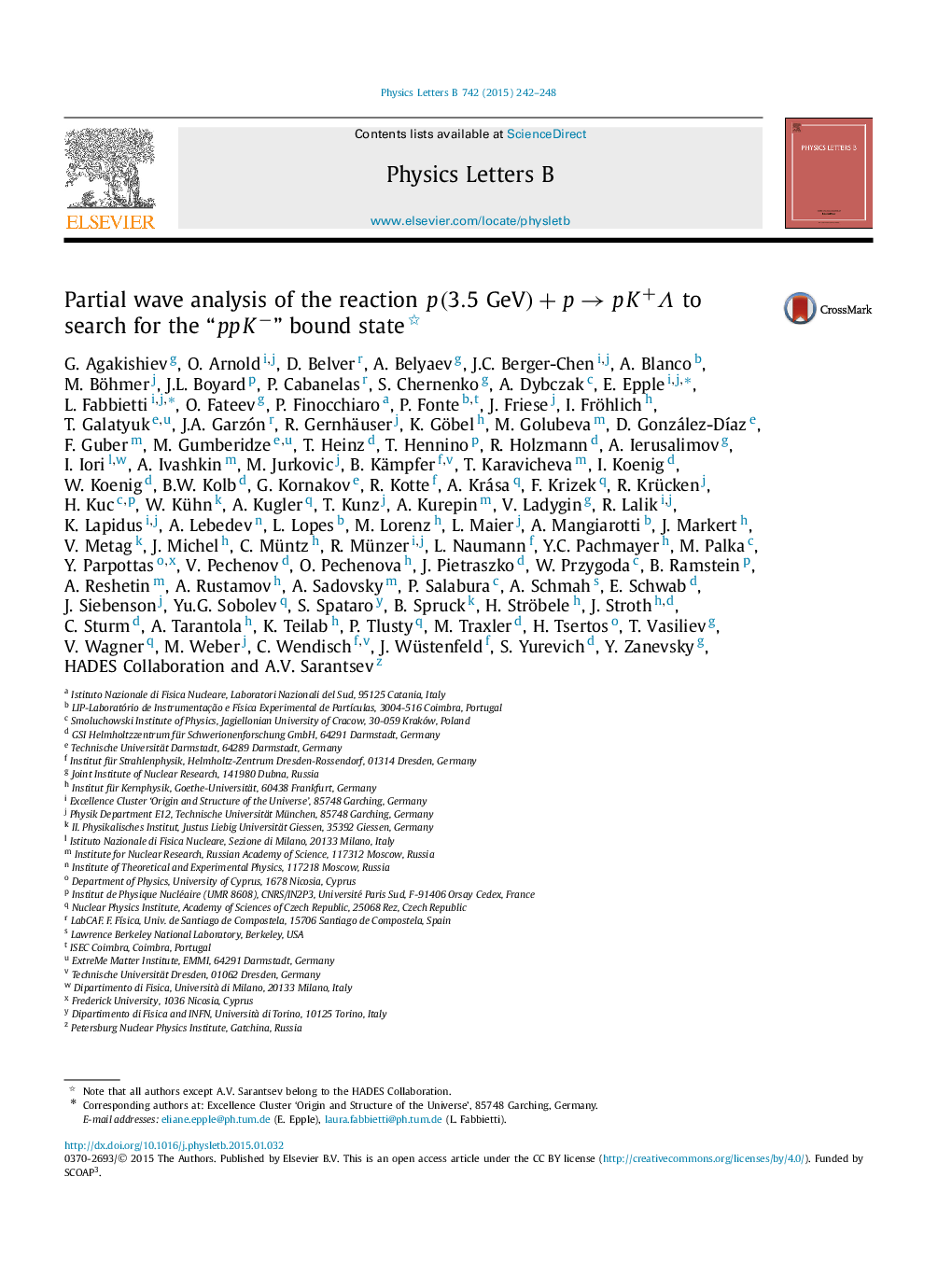| Article ID | Journal | Published Year | Pages | File Type |
|---|---|---|---|---|
| 1849153 | Physics Letters B | 2015 | 7 Pages |
Employing the Bonn–Gatchina partial wave analysis framework (PWA), we have analyzed HADES data of the reaction p(3.5 GeV)+p→pK+Λp(3.5 GeV)+p→pK+Λ. This reaction might contain information about the kaonic cluster “ppK−ppK−” (with quantum numbers JP=0−JP=0− and total isospin I=1/2I=1/2) via its decay into pΛ . Due to interference effects in our coherent description of the data, a hypothetical K‾NN (or, specifically “ppK−ppK−”) cluster signal need not necessarily show up as a pronounced feature (e.g. a peak) in an invariant mass spectrum like pΛ . Our PWA analysis includes a variety of resonant and non-resonant intermediate states and delivers a good description of our data (various angular distributions and two-hadron invariant mass spectra) without a contribution of a K‾NN cluster. At a confidence level of CLs=95%CLs=95% such a cluster cannot contribute more than 2–12% to the total cross section with a pK+ΛpK+Λ final state, which translates into a production cross-section between 0.7 μb and 4.2 μb, respectively. The range of the upper limit depends on the assumed cluster mass, width and production process.
